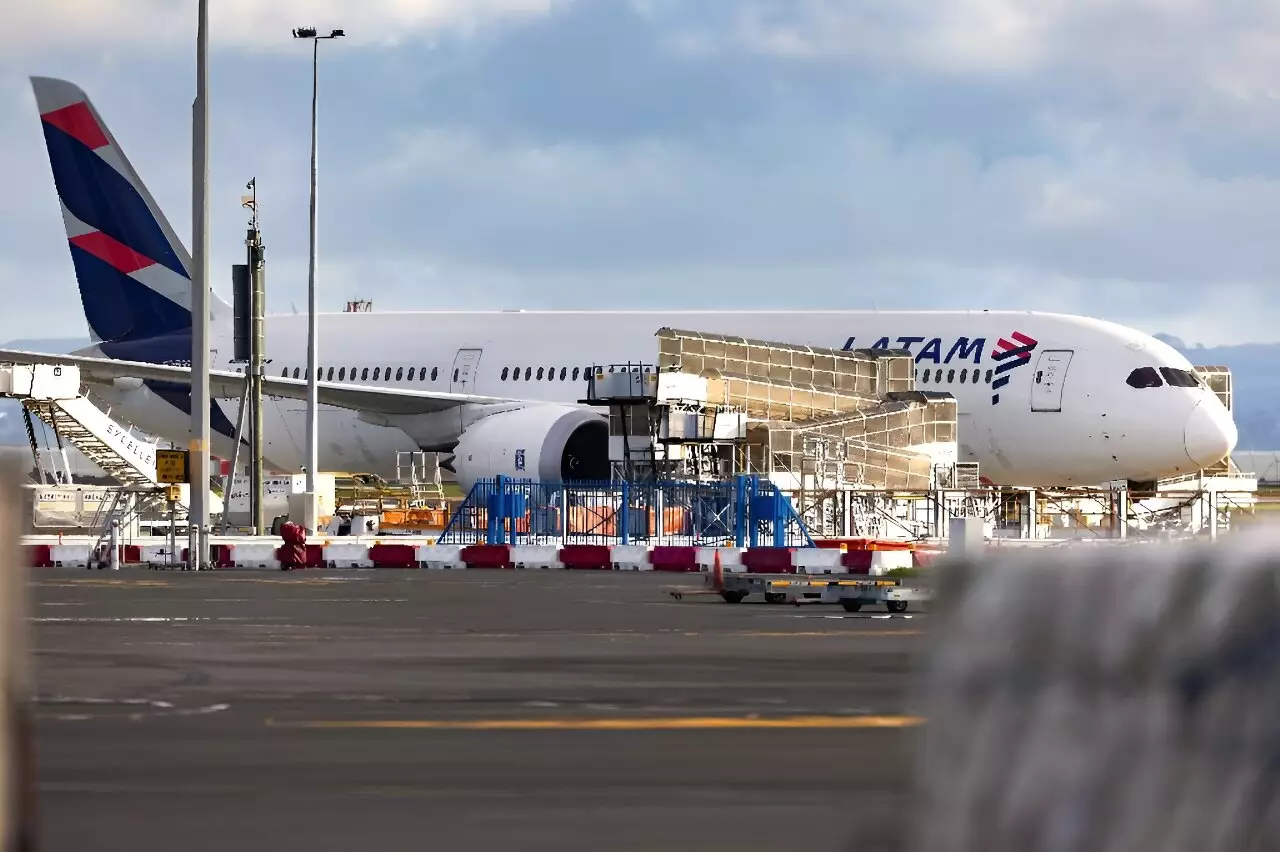Boeing, a well-known aeronautics giant, recently issued a warning to airlines operating its 787 Dreamliner model regarding the inspection of certain switches in the cockpit. This warning came after a LATAM plane bound for New Zealand experienced a severe drop mid-flight, resulting in injuries to multiple passengers. This incident has raised concerns about the safety and maintenance of Boeing aircraft.
The Chilean airline LATAM’s Flight LA800 was flying from Sydney, Australia to Auckland, New Zealand when it suddenly plummeted earthward, causing unrestrained passengers to be thrown out of their seats and some to collide with the cabin roof. This terrifying experience led to the injury of fifty individuals, with thirteen requiring hospitalization. While LATAM initially attributed the incident to a vague “technical event,” sources from the US aviation industry, as reported by the Wall Street Journal, claimed that the mishap was due to the inadvertent actions of a crew member.
According to the sources, a flight attendant accidentally triggered a switch on the pilot’s seat while serving a meal, activating a motorized feature that unexpectedly propelled the pilot forward into the controls, resulting in a sharp nosedive of the aircraft. It is noted that the switch in question is typically covered and not intended for use when the pilot is seated. Both LATAM and Boeing have refrained from making detailed comments on the incident, citing ongoing investigations.
The US Federal Aviation Administration (FAA) has taken steps to address the situation by convening a Corrective Action Review Board (CARB) comprising safety experts to investigate the matter further and provide feedback to Boeing. This investigative process will involve a review of the 2017 service bulletin related to the switches in the pilot seats. The FAA’s involvement highlights the seriousness of the incident and the need for comprehensive safety measures in the aviation industry.
Boeing has faced a series of safety-related challenges in recent years, including the tragic crashes of 737 MAX planes in 2018 and 2019, resulting in the loss of over 350 lives. Additionally, a frightening incident occurred earlier this year when a fuselage panel detached from a Boeing 737 MAX 9 Alaska Airlines jet mid-flight. Furthermore, a Boeing 777 jetliner bound for Japan had to make an emergency landing after a wheel fell off shortly after takeoff, causing damage to several cars in an airport parking lot. These incidents have raised significant concerns about Boeing’s commitment to ensuring the safety of its aircraft.
The recent incident involving the Boeing 787 Dreamliner serves as a reminder of the critical importance of thorough maintenance procedures and safety checks in the aviation industry. The need for effective communication between manufacturers, airlines, and regulatory authorities is evident in ensuring the safety of passengers and crew. As Boeing continues to address safety concerns and implement necessary improvements, it is imperative that all stakeholders collaborate to uphold the highest standards of aviation safety.



Leave a Reply